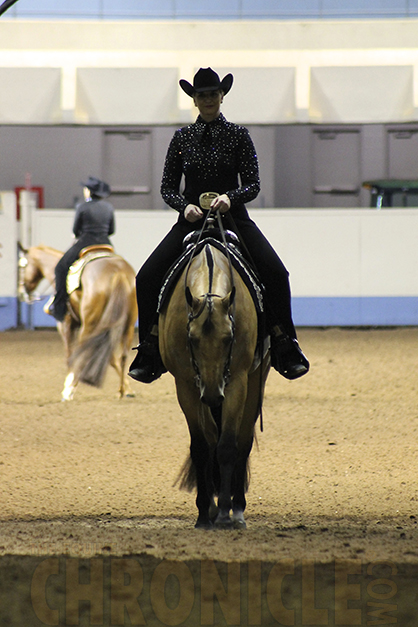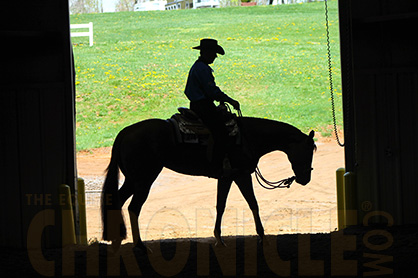First Principles of Horse Training: Part 2
You’re right in the middle of a stellar Horsemanship pattern when you ask your horse to perform a flying lead change. He stops abruptly instead. You leave the class feeling confused and upset, wondering where things went wrong. Did your horse set out to sabotage your chances of a blue ribbon? It’s possibly, but unlikely. It’s more likely this chain of events was the result of sending mixed signals.
In this next installment of our popular series, First Principles of Horse Training, we will consider the next four in a set of 10 Horse Training Principles from the International Society For Equitation Science. The principles are intended to give insight into how horses learn and how to use learning theory to train horses effectively.
- #3- Training Easy-to-Discriminate Cues
- #4- Shaping Responses and Movement
- #5- Eliciting One Response At a Time
- #6- Train Only One Response Per Signal
In case you missed the first two (#1- Taking Into Account Horse Ethology and Cognition and #2- Using Learning Theory Appropriately) click here.
#3 – Training Easy-to-Discriminate Cues- If you’ve ridden horses for any period of time, it’s likely that you’re guilty of sending your horse mixed signals. Signals or riding cues can be verbal, non-verbal, physical, or even emotional. Physical cues can be given to a horse through a rider’s hands, seat, legs, feet, or even through shifts in balance. Just think of the variety of cues that can be initiated through the rider’s legs, alone. You can ask a horse to spur stop, go forward, increase forward motion, slow down, turn right or left on the haunches, back up, side pass, turn right or left on the forehand, change leads, ect. And those all take place within the relatively small area of the horse’s side belly, between the girth and flank. It’s no wonder horses get confused occasionally, especially when they haven’t been trained using easy-to-discriminate cues.
“Because of the large number of responses required in horse training, (especially under-saddle), it’s important that all signals are as clear and as different as possible to enable the horse to discriminate them. This is important in order to avoid confusing the horse, which can result in undesired behaviors and stress,”- (ISES, 2017).
How is this accomplished? Through operant and classically conditioned signals. Remember operant conditioning from Principle #1? It means training while using rewards and punishment. Examples might include positive and negative reinforcement and positive and negative punishment. Click here if you need a refresher.
Classical conditioning is simply the process of making an association between two stimuli. For example, using the verbal command of “Whoa,” to stop a horse can be used if the horse was trained properly to associate the word “Whoa” with a rein signal that taught the horse to stop.
#4- Shaping Responses and Movements- This principle is all about keeping the end goal in mind while rewarding small victories along the way. For example, when training a horse to perform a flying lead change, the process includes several subsequent steps that each build upon the last. First, the horse must increase forward motion on command. Then, he must learn how to shape his body using lateral movement. Then, engaging the hindquarters and initiating lift come into play. Finally, the horse can switch leads easily and effectively.
“For any trained behavior, training begins by reinforcing basic attempts at the target behavior and then gradually improving approximations of that behavior. It’s important to have a plan when training a horse to perform a new response. The horse’s initial responses should be rewarded. As training progresses, the horse should only be rewarded for responses that become more and more similar to the ultimate goal,”– (ISES, 2017).
Improper or poor use of shaping can quickly lead to confusion, which compromises understanding and performance.
 #5- Eliciting Responses One At a Time- This has a lot to do with Principle #3. A horse, much like a human, finds it difficult to distinguish between two or more signals if they’re given at the same time. That’s especially true when it comes to cues that oppose each other, such as acceleration and deceleration. When training has progressed into the advanced stages, the signals came come closer together without creating confusion, if the horse was trained properly from the beginning, being asked for only one response at a time.
#5- Eliciting Responses One At a Time- This has a lot to do with Principle #3. A horse, much like a human, finds it difficult to distinguish between two or more signals if they’re given at the same time. That’s especially true when it comes to cues that oppose each other, such as acceleration and deceleration. When training has progressed into the advanced stages, the signals came come closer together without creating confusion, if the horse was trained properly from the beginning, being asked for only one response at a time.
“The horse is unable to process two or more signals concurrently, as both compete for the horse’s attention. Especially the use of opposite signals (such as acceleration and deceleration) at the same time should be avoided. In the early stages of training, signals should be well separated. However, eventually they can be given closer together. The use of opposite signals at the same time can confuse the horse, through weakening the trained link between signal and behavior/response, and quickly lead to stress and consequently compromise horse performance and welfare, and rider safety,”- (ISES, 2017).
#6 – Training Only One Response Per Signal- In addition to asking for only one response at a time, with one signal, care should be taken to make sure that each signal elicits only one response. Confused?
Here’s an example. A single response can be elicited by a variety of signals. A horse can be stopped by pulling on the reins, saying “Whoa,” using a spur stop, ect. However, it’s important that each signal elicits only one response. If you start using a spur stop to mean “Stop,” but then you also use the same pressure and location on the horse’s side to mean “Go,” that creates confusion because the same signal is being used for two different responses.
“While each response may be elicited by a variety of signals (i.e. rein cue or lead rope) it’s most important that each signal elicits only one response. If the same signal is used to elicit more than one response, confusion begins to set in as predictability decreases. The use of ambiguous rein and leg signals lead to confusion, stress, and responses that compromise performance and rider safety,” (ISES, 2017).
Feel smarter already? Stay tuned for the final installment in this series where we will examine:
#7- Forming Consistent Habits
#8- Training Persistence of Response (Self-Carriage)
#9- Avoiding and Dissociating Flight Response
#10- Demonstrating Minimal Levels of Arousal











